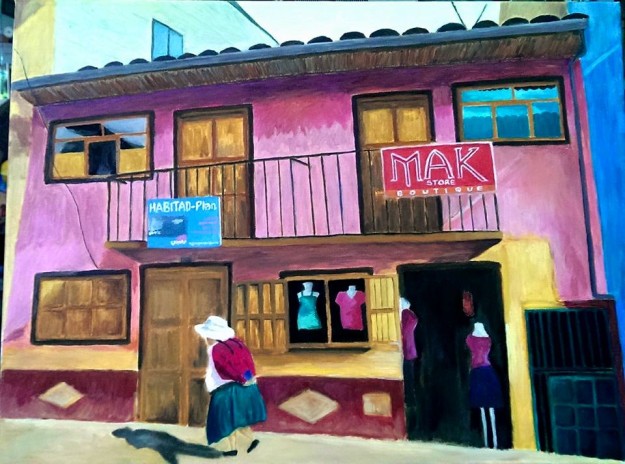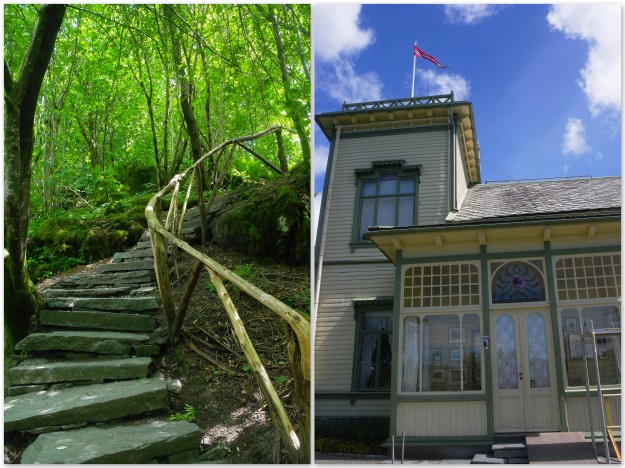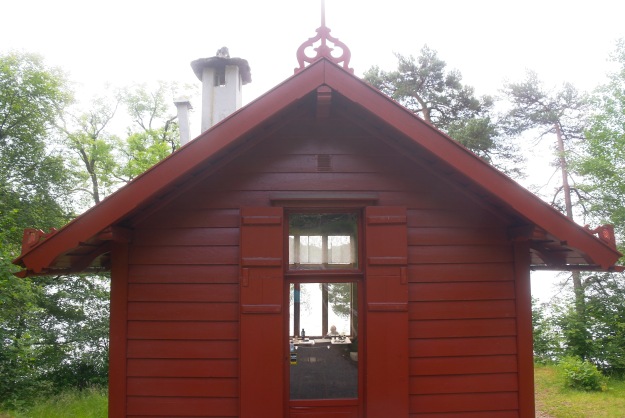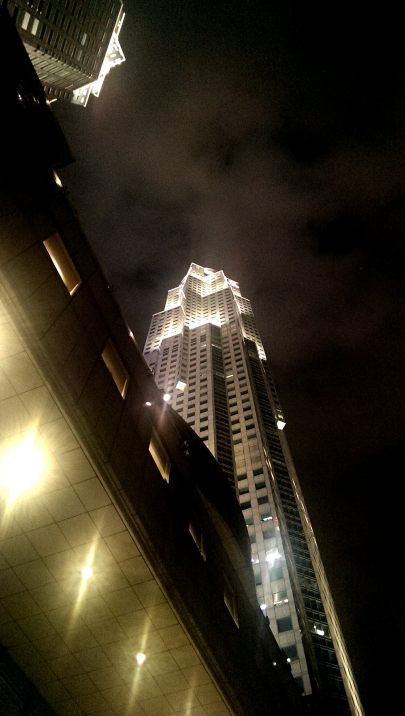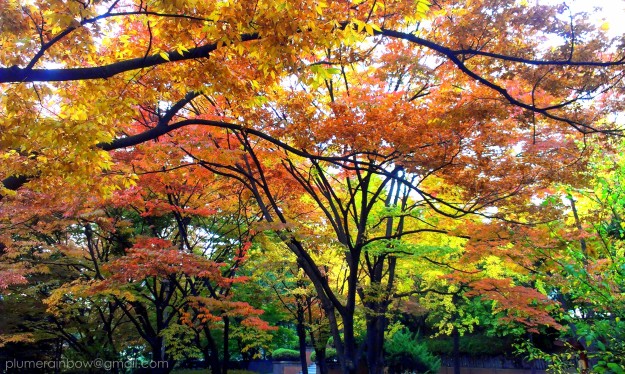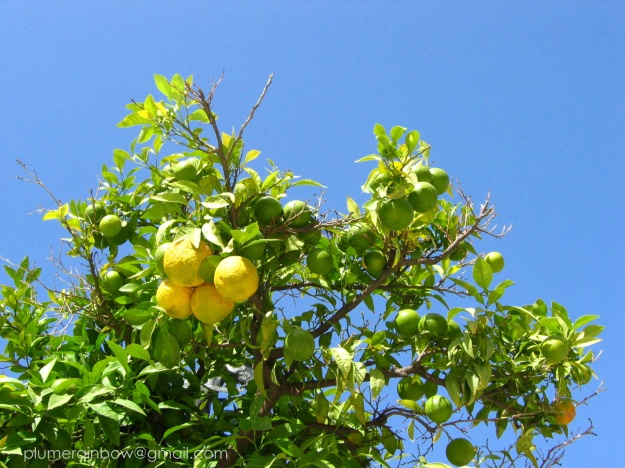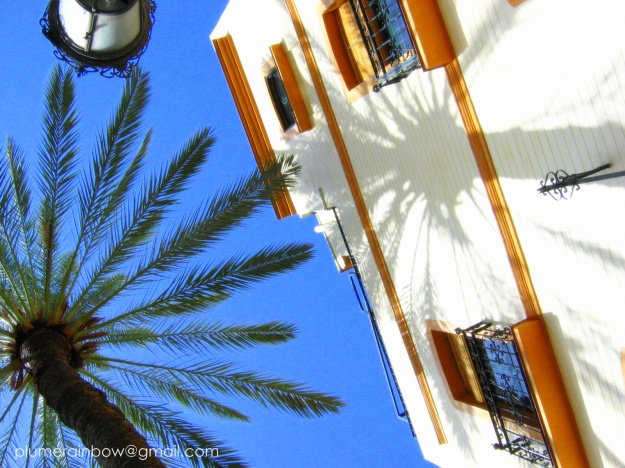As you may know, I occasionally write about flowers. Of all the flowers, the bougainvillea feels the most familiar. Almost like an old friend, in spite of its thorns. Where I grew up, there were bougainvillea shrubs out in the garden and beyond, popular in the neighbourhood perhaps because they grow easily in warm climate. To the extent you’d have to be mean and trim them often. The flowers – which are not true flowers but more like bract structures – are not particularly ornate but they were around, like a constant companion. It is the type of plant that does not bloom shyly, but shocks in flames of fuschia and magenta – at least those are the colours common to the bougainvillea glabra variety here.
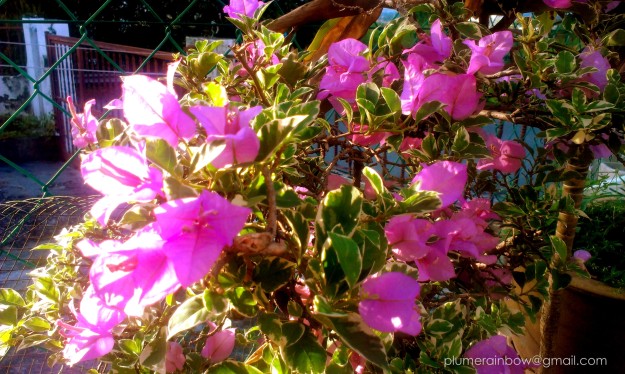
Bougainvillea in my parents’ garden. February 2013.
Its botanical name was given by French botanist Phillibert Commerson, who is said to have observed and described the flower during the circumnavigation with voyager Louis Antoine Bougainville. Although some have said the flower was actually first spotted and recorded by Commerson’s girlfriend Jeanne Baret: Baret had disguised herself as a man to join in the expedition as Commerson’s botanist assistant, ship surgeon and became the first woman (though under disguise) known to circumnavigate the world. What an interesting story. Perhaps “jeanne baret” would have been a flower name with a more glamourous sheen. (Another plant was named after Baret though it has since shed its name.)

Near Braddell Road, Singapore. July 2012.
Did you know that Ipoh – a city 200km north of Kuala Lumpur in Malaysia – is known as “Bougainvillea City“? I didn’t know that until I started writing this post. Why is it the official flower of Ipoh? Due to its abundance, perhaps. But the bougainvillea is found in many parts of Malaysia, and is hardly unique to Ipoh.
It is interesting that a flower that isn’t native to a place can take on such a hold in in its adopted place. The bougainvillea is said to be native to South America (Brazil, Peru, Argentina). Plants, like humans, have travelled far and wide, cross-bred and made a new home in a foreign land.

Fuschia-flamed bougainvillea bush. In the background, Sulamani Pahto, in Bagan, Myanmar. March 2012.
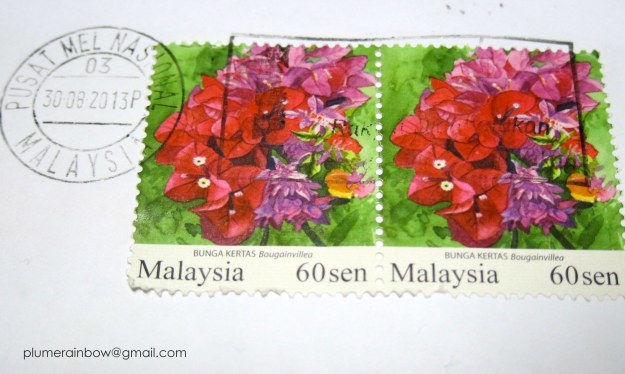
Artistic rendition of the bougainvillea on a Malaysia stamp.
In the Malay language, the bougainvillea is known as bunga kertas, which literally means “paper flower”, as in how the flower is thin, like paper. In the Chinese language, it is colloquially known as 九重葛 which refers to “nine layers” – perhaps reflective of how the flower grows in bouquets and layers. How is it the same flower has such different names in different languages, and that’s excluding the confusing names that botanists use.
What do you call the bougainvillea in your language?

